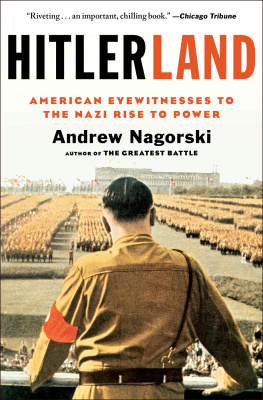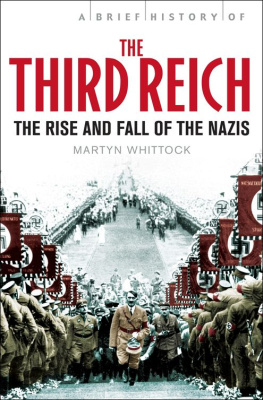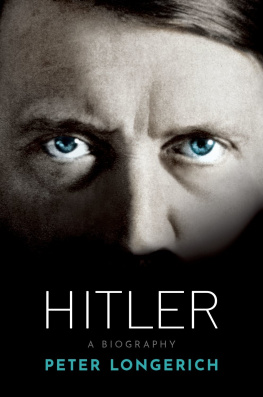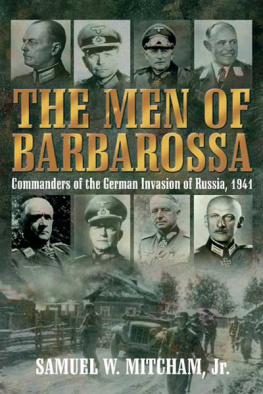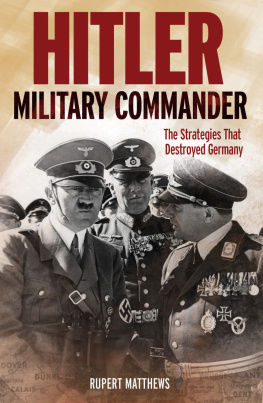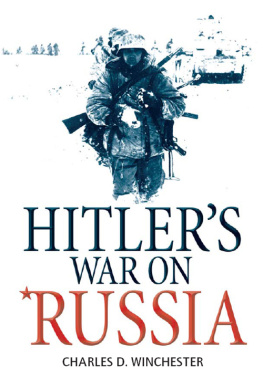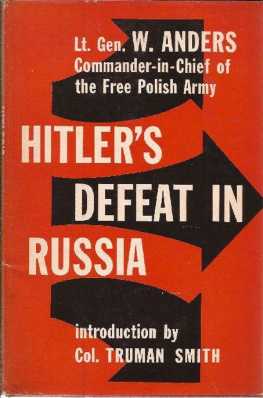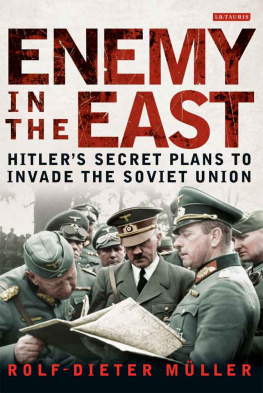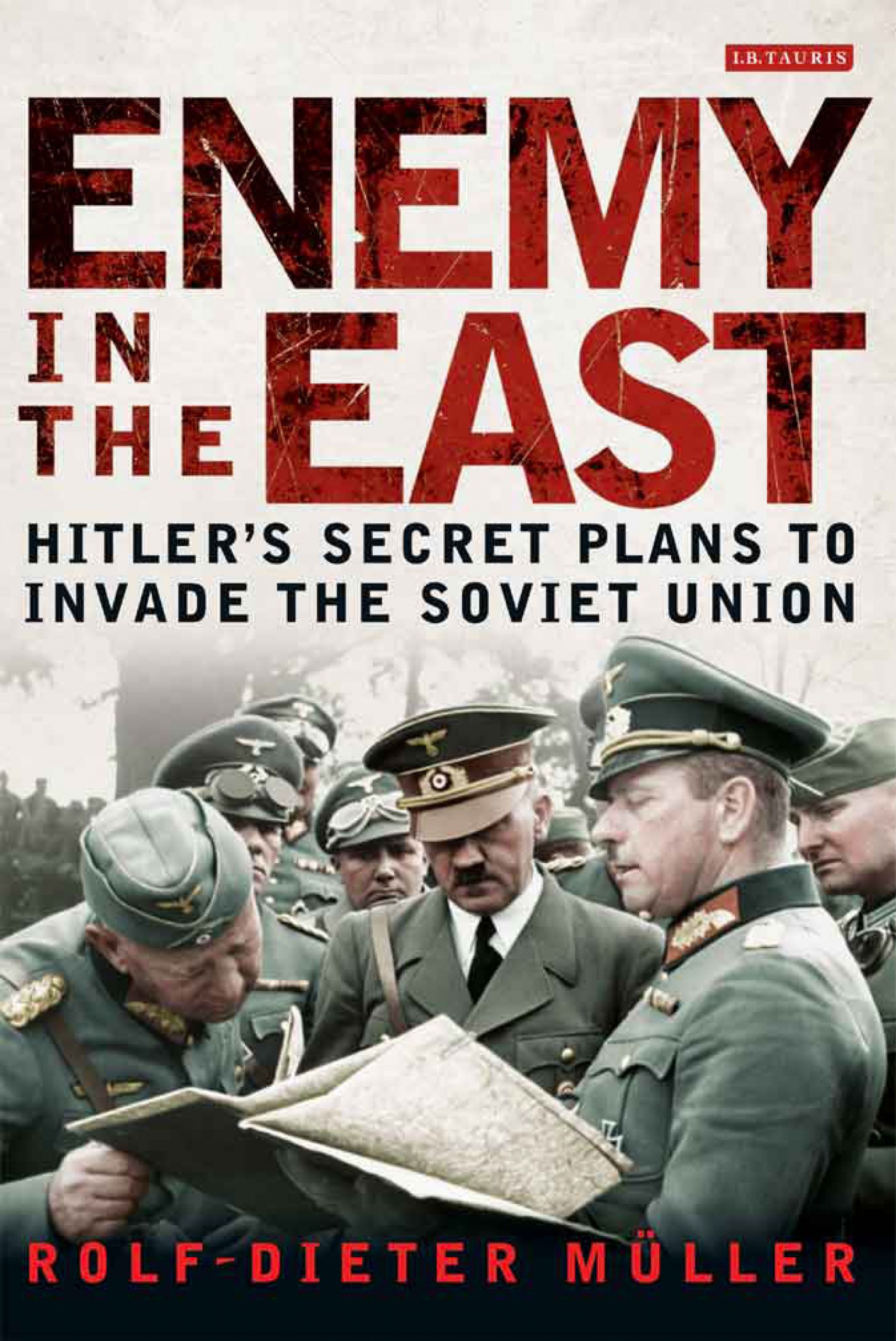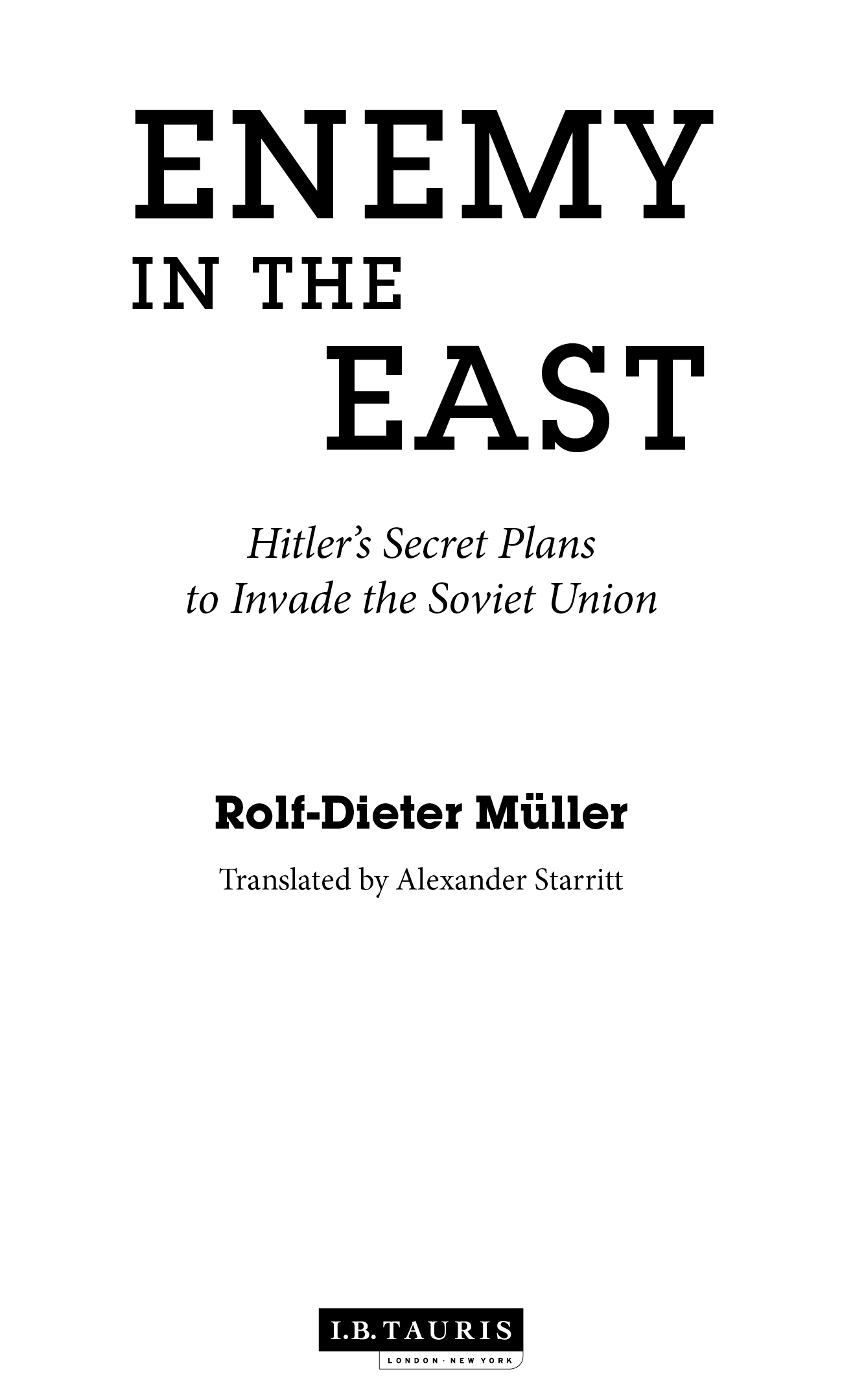ROLF-DIETER MLLER was Professor of Military History at Humboldt University, Berlin until 2014. He has also been Leading Scientific Director in the German Armed Forces Military History Research Institute in Potsdam, and Coordinator of the German Reich and the Second World War project. He is the author of numerous publications on World War II, including The Unknown Eastern Front: The Wehrmacht and Hitlers Foreign Soldiers (I.B.Tauris).
Published in 2015 by I.B.Tauris & Co. Ltd
6 Salem Road, London W2 4BU
175 Fifth Avenue, New York NY 10010
www.ibtauris.com
Distributed in the United States and Canada Exclusively by Palgrave Macmillan
175 Fifth Avenue, New York NY 10010
Copyright 2011 Ch. Links Verlag, Berlin
English translation copyright 2015 Alexander Starritt
The right of Rolf-Dieter Mller to be identified as the author of this work has been asserted by the licensor in accordance with the Copyright, Designs and Patents Act 1988.
All rights reserved. Except for brief quotations in a review, this book, or any part thereof, may not be reproduced, stored in or introduced into a retrieval system, or transmitted, in any form or by any means, electronic, mechanical, photocopying, recording or otherwise, without the prior written permission of the publisher.
Every attempt has been made to gain permission for the use of the images in this book. Any omissions will be rectified in future editions.
References to websites were correct at the time of writing
ISBN: 978 1 78076 829
eISBN: 978 0 85773 537
A full CIP record for this book is available from the British Library
A full CIP record is available from the Library of Congress
Library of Congress Catalog Card Number: available
Text design, typesetting and eBook by Tetragon, London
The translation of this work was funded by Geisteswissenschaften International Translation Funding for Humanities and Social Sciences from Germany, a joint initiative of the Fritz Thyssen Foundation, the German Federal Foreign Office, the collecting society VG WORT and the Brsenverein des Deutschen Buchhandels (German Publishers & Booksellers Association).
Contents
List of Illustrations
List of Maps
Introduction
On 22 June 1941, the German Wehrmacht and its allies began their assault on the USSR. The operation was code named Barbarossa. It was the opening move in the largest and bloodiest war in world history. In its first weeks, Hitlers armies marched east, confident of victory despite high losses and a gradual slowing of their advance. But Stalins empire did not, as expected, collapse under the initial onslaught. The Russian resistance stiffened amid monstrous sacrifices by the Red Army. Although the Germans succeeded in reaching the outskirts of Moscow within a mere five months, Stalin then struck back and knocked the whole German eastern front off balance. It took, however, another forty months for the Soviet armed forces to fight their way down the long road into the west, at which point Hitler killed himself in his bunker and so opened the door to capitulation.
The GermanSoviet conflict stands at the centre of World War II history. It was more than a duel between dictators. Hitler conceived of it as an ethnically ideological war of annihilation. He made sure from the German side that the campaign was fought with the utmost intensity and viciousness, and that the occupation of the conquered territories was a criminal one. It was undoubtedly the most extensive war of plunder and obliteration ever seen, one beside whose powers of destruction even the terrors of a Genghis Khan were attenuated. The defeat of Germany destroyed not only the German Reich, but also all the states of Eastern Europe, which were annexed by the Soviet imperium for the next forty years. This division of Europe and the ensuing Cold War between East and West defined an eras politics worldwide.
All this began with the German invasion on 22 June 1941. It is therefore no surprise that this war still stands out in our collective memory and prompts our historians to ask new questions of the past. Many contemporaries even during World War II saw the decision to invade the USSR as Hitlers greatest strategic mistake. The victorious powers considered the planning of this war of aggression one of the Nazi regimes gravest crimes, especially because the German Reich had signed a non-aggression pact with the Soviet Union as recently as August 1939. The invasion that took place perfidiously, treacherously, deceitfully, less than two years later, was entirely unprovoked.
In the explanation he gave the German populace and the soldiers of the Wehrmacht, Hitler claimed that he had been forced to counter Soviet expansionism with a preventive strike. To the judges in the Nuremberg War Crimes Tribunal, on the other hand, it was beyond doubt that Barbarossa was a rapacious act of aggression. They did, however, largely accept the interpretation put forward by the accused and their lawyers, namely that Hitler had made the decision himself and, on 31 July 1940, given the military leadership the task of carrying it out. Whether he had been acting more from a strategic or an ideological standpoint remained an open question. While Wilhelm Keitel, as head of the Supreme Command of the Armed Forces ( Oberkommando der Wehrmacht , OKW), and Alfred Jodl, as head of the OKWs operations staff, were sentenced to death, the High Command of the Army itself ( Oberkommando des Heeres , OKH) went unpunished. After 1945, Hitlers generals were able to disseminate the uncontested impression that they, after receiving the dictators decision, had drawn up and implemented an ingenious plan which had failed only because of Hitlers constant meddling. Their worst enemy had not been the Red Army, but rather their own Fhrer. To the myth of the guiltless Wehrmacht was thus added the myth of its leaders unimpeachable professionalism.
The theory that Hitler alone was responsible for the attack on the USSR and that he let himself be guided in it by the ideological obsessions whose origins can be read in his early political manifesto, Mein Kampf , has become an important pillar in the historical edifice. For decades it has been the mainstay of a far-reaching interpretation of Hitlers foreign policy. This assumes that, with the taking of power, the internal consolidation of his regime and the gigantic policy of rearmament, Hitler was consistently and purposefully moving step by step closer to his actual goal, the war for Lebensraum (living space) in the east. After Austria and Czechoslovakia, the next victim of German expansionism had to be Poland. These moves were necessary preliminaries for the overthrow of France, which would secure Hitlers rear and so allow him to turn his attention to his real target. The conquest of the USSR would then provide the basis for a war of the continents, that is, the war for world domination.
Was Hitler really in possession of this kind of step-by-step plan, or of the ability to carry it out consistently and with tactical nous? Could the USSR really only be the penultimate stage in such a plan? Was Hitler then a brilliant strategist throughout the first years of the war, one who succeeded almost wherever he turned, and who had at his command a Wehrmacht made almost invincible by the tactic of blitzkrieg? An older generation of historians were convinced. It was guided by a series of ground-breaking studies written by historians who were junior officers during the war. They garnered the highest acclaim in the 1960s and 1970s, and to this day they still shape our understanding of what caused or led up to Barbarossa. Andreas Hillgruber and Hans-Adolf Jacobsen are the most prominent proponents of this view. Particularly significant for the interpretation of Hitlers step-by-step plan was Klaus Hildebrands systematic depiction of the Third Reichs foreign policy. Many German and international historians have followed this line. Even the multi-volume work produced by the Bundeswehrs Military History Research Office, The German Reich and the Second World War ( Das Deutsche Reich und der Zweite Weltkrieg ), oriented its comprehensive examination of Operation Barbarossa in its fourth volume (1983) on the same points. Hardly mentioned in that account was an important discovery of Ernst Klinks, who had established that the first military plans and preparations for a war against the USSR were made by the Army High Command (OKH) without any instructions from Hitler. This finding was explained away with the assertion that the OKH had naturally been familiar with Hitlers eastern programme and had, as it were, geared up to meet the dictators wishes with pre-emptive obedience.



